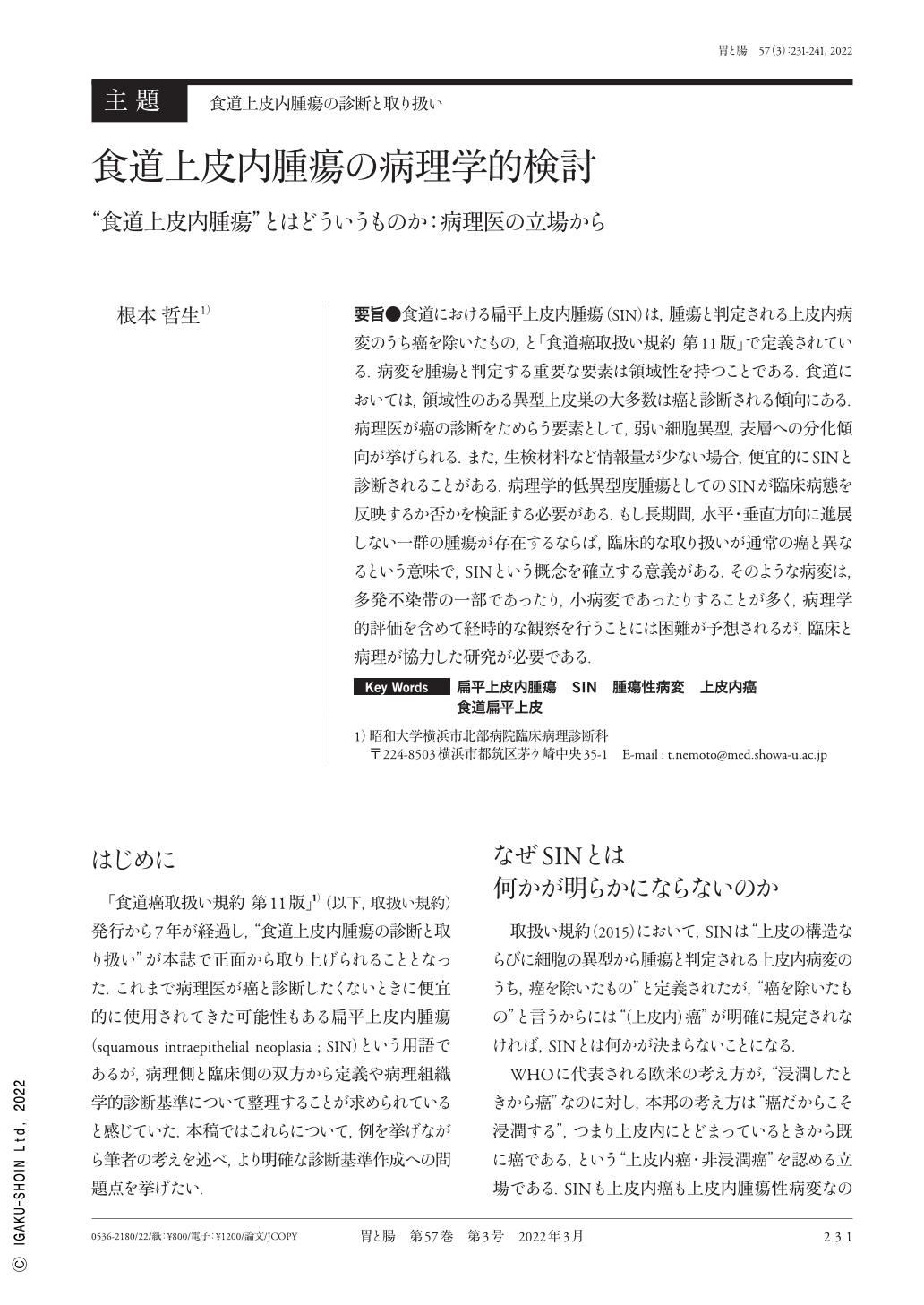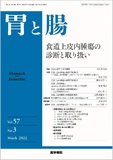Japanese
English
- 有料閲覧
- Abstract 文献概要
- 1ページ目 Look Inside
- 参考文献 Reference
- サイト内被引用 Cited by
要旨●食道における扁平上皮内腫瘍(SIN)は,腫瘍と判定される上皮内病変のうち癌を除いたもの,と「食道癌取扱い規約 第11版」で定義されている.病変を腫瘍と判定する重要な要素は領域性を持つことである.食道においては,領域性のある異型上皮巣の大多数は癌と診断される傾向にある.病理医が癌の診断をためらう要素として,弱い細胞異型,表層への分化傾向が挙げられる.また,生検材料など情報量が少ない場合,便宜的にSINと診断されることがある.病理学的低異型度腫瘍としてのSINが臨床病態を反映するか否かを検証する必要がある.もし長期間,水平・垂直方向に進展しない一群の腫瘍が存在するならば,臨床的な取り扱いが通常の癌と異なるという意味で,SINという概念を確立する意義がある.そのような病変は,多発不染帯の一部であったり,小病変であったりすることが多く,病理学的評価を含めて経時的な観察を行うことには困難が予想されるが,臨床と病理が協力した研究が必要である.
SIN(squamous intraepithelial neoplasia)of the esophagus is defined as an intraepithelial lesion determined to be a tumor, but not a cancer. An important factor in determining that a lesion is a neoplasm is that it has territoriality. In the esophagus, the majority of territorial atypical epithelial lesions tend to be diagnosed as cancer by experienced pathologists. Factors that make pathologists hesitate in making a diagnosis of cancer include less cellular atypia and a tendency to differentiate toward the surface layer. In addition, while making the diagnosis on less informative specimen such as small biopsy material, some pathologists may pose the diagnosis of SIN for convenience. It is necessary to verify whether a pathologically low-grade tumor diagnosed as SIN reflects the clinical course of the lesion. If there is a group of tumors that do not grow horizontally and vertically for a long period of time, it is logical to establish the concept of SIN in the sense that clinical treatment is different from normal cancer. Even if it is expected that it will be difficult to observe over time, including pathological evaluation, further collaborative investigation by endoscopists and pathologists is necessary.

Copyright © 2022, Igaku-Shoin Ltd. All rights reserved.


